Start drifting: complete guide
By RobinB on 21 January 2025 DriftIn the world of sports cars, drifting holds a unique place. Born in Japan in the 1980s, this practice quickly evolved from illegal street racing to official circuit competitions.
This discipline requires perfect vehicle control. The goal? Slide through corners while maintaining precise and spectacular trajectories. Drivers usually prefer rear-wheel-drive cars to maximize efficiency and style in their drifts 😋
Choosing a used drift car requires a solid understanding of key aspects for practicing this discipline. The engine, type of transmission, and chassis are essential elements to consider. It’s also important to budget for maintenance and tire replacement. For beginners, certain models offer an excellent balance between cost and performance, allowing them to start drifting while managing expenses and upkeep 💶
What is drifting?
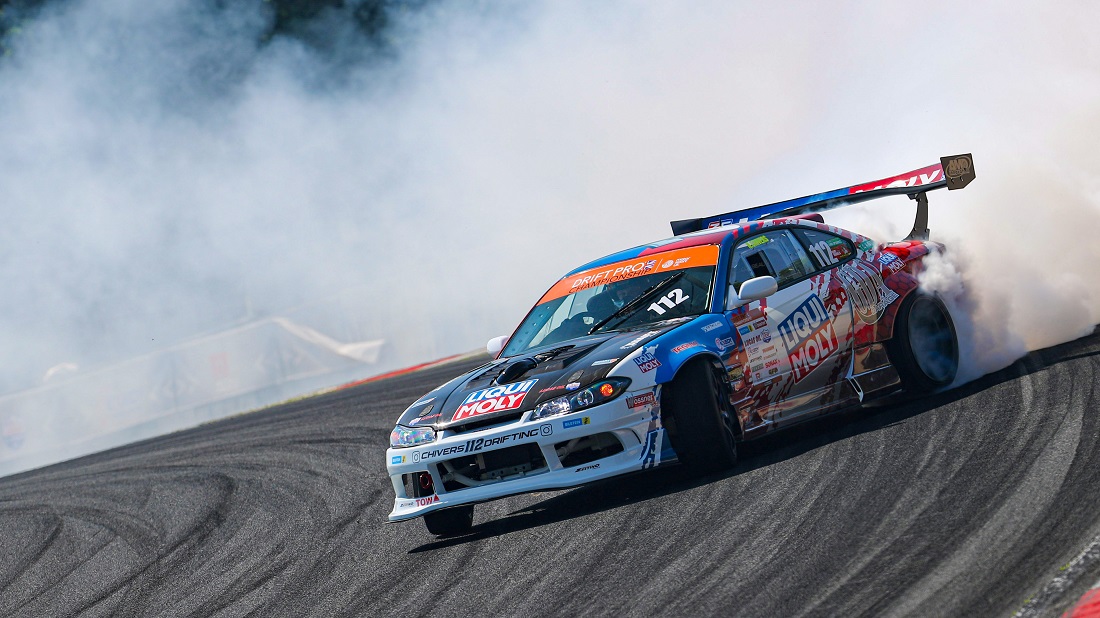
Drifting involves controlling a vehicle in a slide through corners while maintaining precise trajectories and spectacular visual style 😱
Drift cars are mostly rear-wheel-drive vehicles or even all-wheel-drive ones, offering an optimal power distribution to the rear wheels to facilitate sliding 🔥
For effective drifting, a manual gearbox is preferred over an automatic one, as it allows more precise gear management. It is also essential to disable electronic assists, such as traction control and ABS, which could intervene to correct the drifts.
Techniques used in drifting
- E-brake Drift: Using the handbrake to lock the rear wheels and initiate or adjust a drift.
- Power Over: A sudden acceleration entering a corner to cause oversteer.
- Heel-Toe Shifting: A technique involving simultaneous braking and downshifting to maintain optimal engine speed and avoid jerks.
- Clutch Kick: Quickly disengaging and re-engaging the clutch to lose traction on the rear wheels.
- Shift Lock Drift: Rapid downshifting without heel-toe to induce a drift through loss of traction.
- Feint Drift: Weight transfer through a quick steering input to lighten the rear and induce oversteer.
- Dirt Drop Drift: Dropping a rear wheel off the track to help initiate a slide.
- Braking Drift: Hard braking into a corner to lose grip and create controlled oversteer.
- Kansei Drift: Quickly releasing the throttle at high speed to induce oversteer.
- Jump Drift: Bouncing a rear wheel off the road edge to lose traction.
- Long Slide Drift: Using the handbrake in a straight line to set up a prolonged drift angle before a corner.
- Swaying Drift (Choku Dori): Swinging the car’s rear from side to side to maintain a drift at low speeds.
To execute a drift successfully, it’s crucial to keep the vehicle sliding throughout the corner, optimizing power and control. Drift competitions evaluate style, attack angle, trajectory, and speed, making this discipline as technical as it is spectacular 🤩
For beginners, it’s essential to have a vehicle suited to the specific demands of drifting.
What are the essential criteria for a drift car?
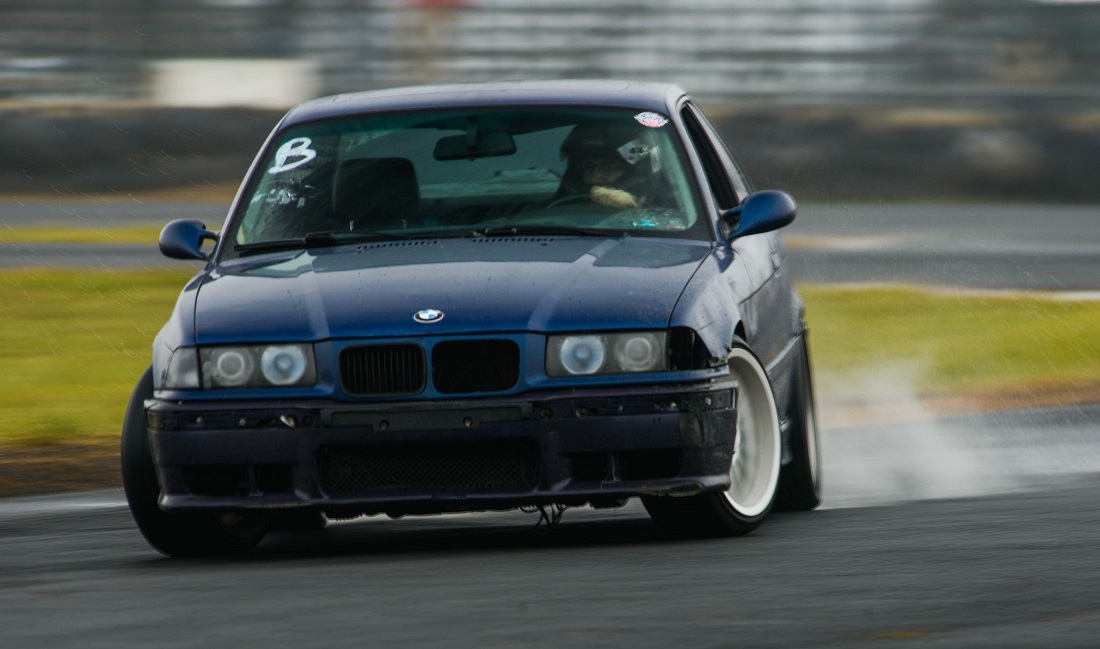
To make a car suitable for drifting, several criteria must be met:
Engine power and torque: While aiming for 500 horsepower isn’t necessary for beginners, significant engine torque is essential for maintaining and controlling a slide.
Transmission: Rear-wheel-drive is indispensable. It promotes oversteer and offers better control of slides.
Chassis: A rigid and solid chassis is crucial to withstand the extreme stresses of this discipline. Reinforcing the chassis at the rear subframe and possibly installing strut bars at the front and rear is recommended 💪
Suspension: Adjustable suspension allows optimization of ride height and stiffness, enhancing the vehicle’s stability. Investing in quality coilovers is highly recommended.
Differential: The differential is a key component for drifting. Most cars with factory “open” differentials are not well-suited for this discipline, as they direct all power to the wheel that loses grip, making slides unstable. For effective practice, two common options are welded differentials and limited-slip differentials (LSD). The welded diff is an economical solution that locks both rear wheels to rotate at the same speed, facilitating drift. However, it’s illegal on public roads and can be uncomfortable at low speeds. The LSD, on the other hand, provides better versatility by distributing power between the wheels and locking when necessary, making it suitable for mixed road-track use.
Final drive ratio: A shorter ratio allows faster acceleration, ideal for drifting, but reduces the vehicle’s top speed.
Handbrake: While optional for beginners, a hydraulic handbrake can be invaluable for initiating and managing drifts.
Wide-angle kit: This kit increases the steering angle of the front wheels, offering better control and more spectacular angles during slides. While optional, it is appreciated by advanced drivers to push drifting mastery further.
Maintenance: As with any sports vehicle, regular maintenance is indispensable. Drifting puts intense stress on the clutch, transmission, and tires, often running the engine at high RPM. On dry tracks, tire wear is rapid, requiring a significant budget. However, on wet or irrigated tracks, wear is much lower, reducing costs.
Tip: Find a garage that can provide you with used tires to finish during your drift sessions 😉
Petrol or diesel engine?
Petrol engines are generally preferred for drifting due to their quick throttle response, lighter weight, and wide power range, making them ideal for controlling slides.
Diesel engines, while usable, are more challenging to exploit due to their limited power band, slower response, and often greater weight. However, their high torque can be an advantage, particularly on wet tracks or with a specific drifting style. For beginners, petrol remains the best choice for easier handling and learning.
Which used car to start drifting?
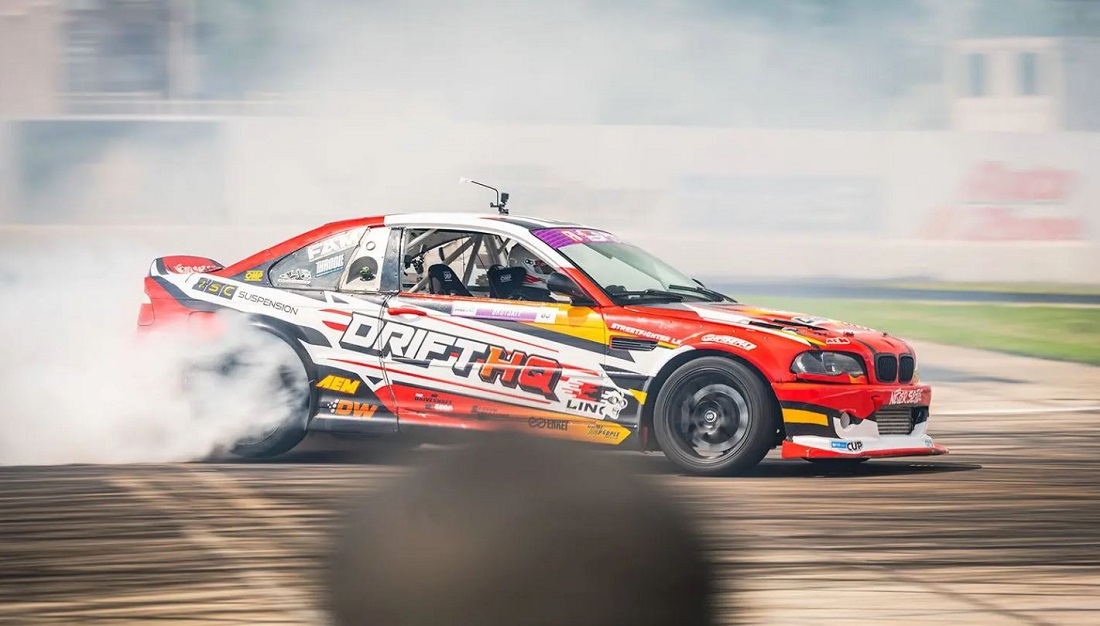
If you are looking for a drift car on classified ad sites, some models are particularly suited to drifting. Japanese and German rear-wheel-drive cars are favorites among drifters, but American models, though less common in France, also offer interesting options 👍
Check out the drift car listings on our website to discover vehicles currently for sale, whether ready-to-race competition models or stock cars suited for leisure days.
The car's exterior appearance matters little, as it will often be exposed to impacts. It’s better to focus on its mechanical condition. A mechanically sound car will allow you to spend more time on the track and less time fixing issues 😁
BMW
Older BMW models are highly sought after in the drifting world for their reliability, power, and agility. Here’s an overview of the most popular models:
- BMW E30: This model from the 80s and 90s is an excellent base for drift enthusiasts, valued for its reliability and handling.
- BMW E36: Newer and easier to find, the E36 offers a good balance between performance and cost.
- BMW E46: Renowned for its balance and power.
- BMW E90 and E92: More modern models appreciated for their power and modern features.
- BMW E34 and E39: For those who prefer larger sedans, the E34 and E39 are interesting options.
Nissan
The Nissan Silvia, in its various generations from the S13 to the S15, is highly appreciated in the drifting world for its performance/price ratio and ease of modification.
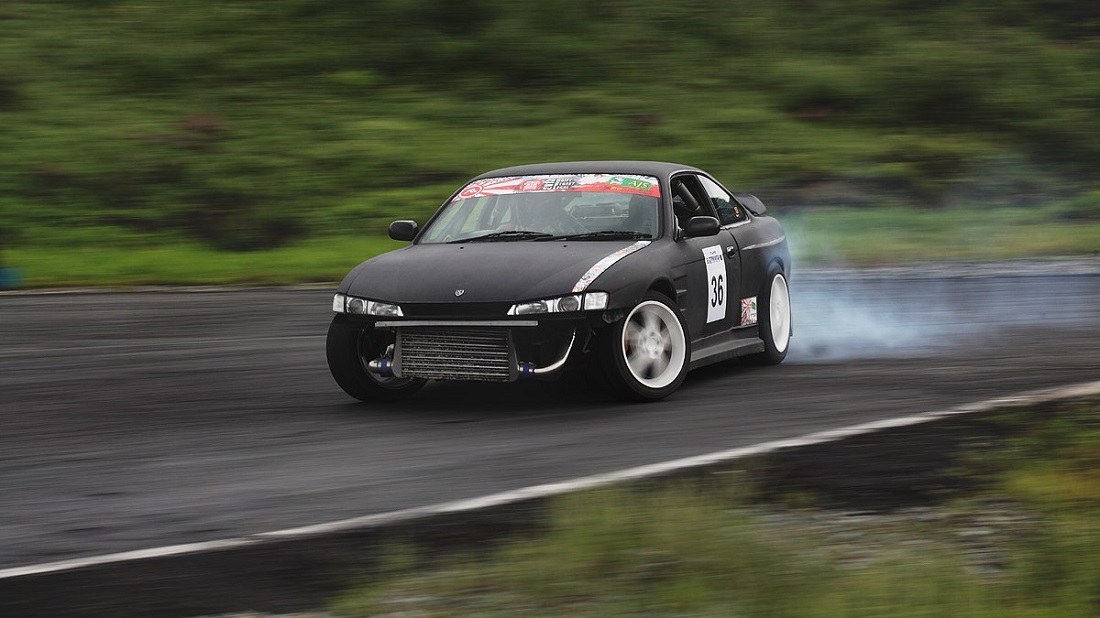
- Nissan Silvia S13 (1989-1994): Equipped with the SR20DET engine producing around 200 horsepower, the S13 is lightweight and easy to modify, making it ideal for beginners. Spare parts are plentiful and affordable.
- Nissan Silvia S14 (1994-1998): Heavier than the S13, the S14 is known for its stability and performance. It shares the SR20DET engine with the S13, giving it similar tuning potential.
- Nissan Silvia S15 (1999-2002): The most modern of the three generations, the S15 features performance and design improvements. It is often equipped with a helical differential, less suitable for drifting due to its limited progressiveness in enabling sharp slides.
- Nissan 350Z (2002-2009): Powered by a V6 engine, the 350Z is valued for its raw power and robustness, making it a common sight in drift competitions.
- Nissan Skyline GT-R R34 (1999-2002): An iconic figure in the drifting world, the Skyline R34 is known for its RB26DETT engine and ATTESA E-TS all-wheel-drive system, often modified for drifting.
Toyota
Toyota is well-represented in the drifting scene, with several iconic models particularly suited to this practice.
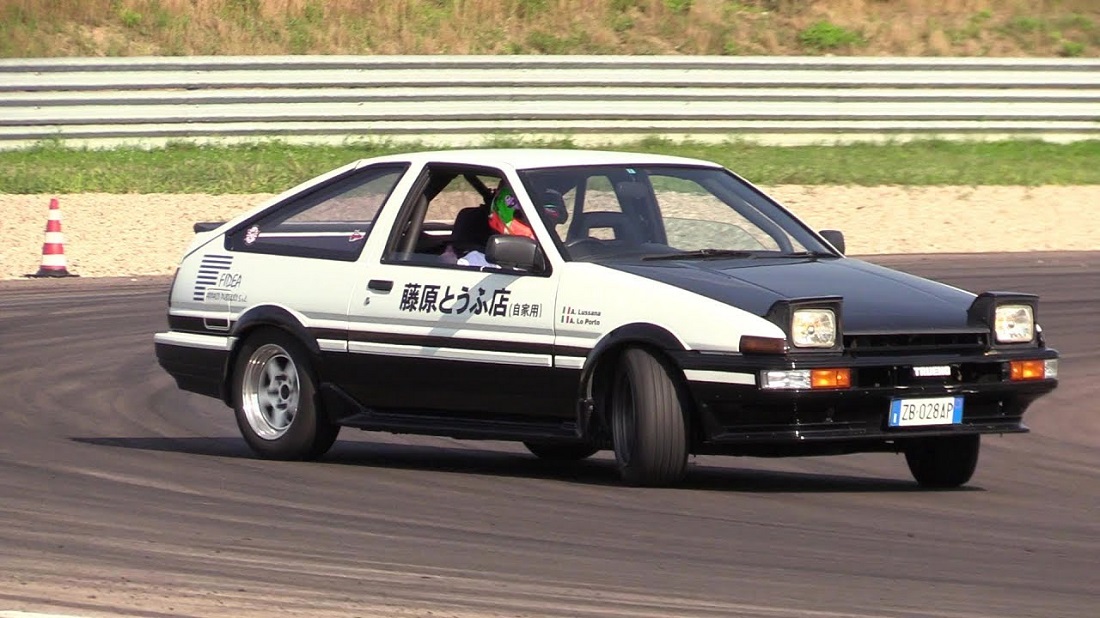
- Toyota AE86: This legendary model, made famous by the "Initial D" anime series, is highly sought after in the drifting world. Produced in the 1980s under the Corolla GT name in France, the AE86 is lightweight, agile, and equipped with the 4A-GE engine, offering significant tuning potential despite its modest power. Spare parts are still available, but well-maintained examples are increasingly rare, driving up its value.
- Toyota Supra Mk4: An iconic performance car, the Supra Mk4 is often equipped with the 2JZ-GTE engine, renowned for its durability and ability to handle extensive modifications. Ideal for those seeking a powerful and reliable drift car.
- Toyota GR86: Inspired by the spirit of the AE86 but equipped with modern technologies, the GR86 offers excellent value for money for drift enthusiasts. Its balance and handling make it a good base, although modifications are necessary to maximize its drifting potential.
- Toyota Supra Mk3: Older but still competitive in the drifting world, the Supra Mk3 is equipped with the 7M-GTE engine. It represents a good compromise between power and cost. However, investments in maintenance and modifications are often required to make it fully drift-ready.
Mazda
Mazda is also well-represented in the drifting world, with several models offering ideal characteristics for this discipline.
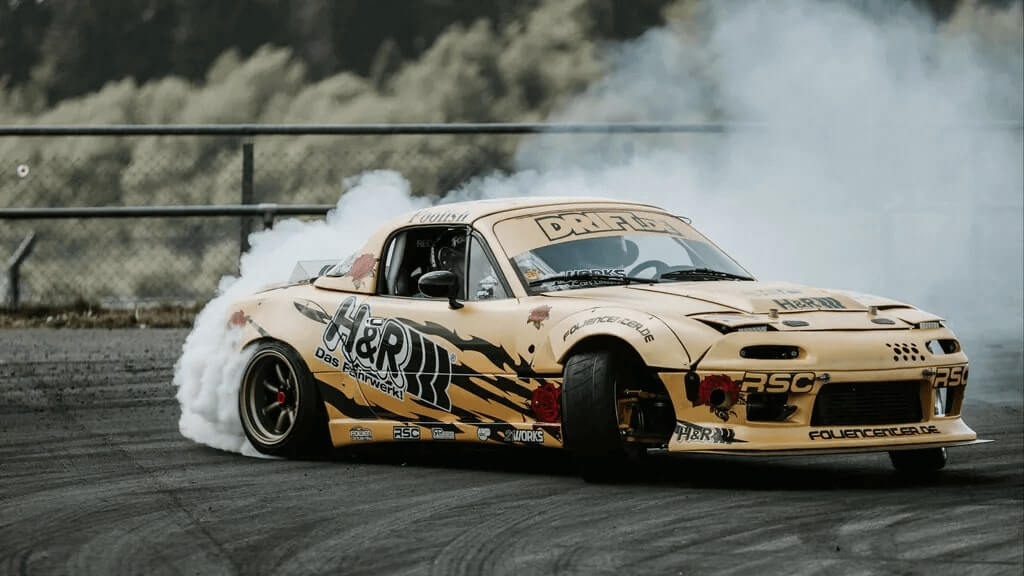
- Mazda MX-5 Miata (NA, NB, NC, ND): The MX-5 Miata is a lightweight and agile rear-wheel-drive car, ideal for beginners in drifting. While less powerful than some other models, it compensates with its handling and low maintenance costs. With modifications such as a sports suspension and a limited-slip differential, it can be perfectly suited for drifting.
- Mazda RX-7 (FC, FD): Equipped with a rotary Wankel engine, the RX-7 is known for its power and responsiveness. While this engine requires more attentive maintenance, the RX-7 offers ideal weight distribution and exceptional handling, making it a popular choice for drifting.
- Mazda RX-8: Also equipped with a rotary engine, the RX-8 benefits from excellent weight distribution and a rigid chassis, providing dynamic behavior ideal for drifting. However, its engine demands special attention in terms of maintenance.
What other brands are suitable?
In addition to the brands previously mentioned, other manufacturers also offer vehicles well-suited for drifting. Mercedes, for example, provides models equipped with powerful and efficient engines. Subaru, known for its all-wheel-drive systems, offers the BRZ (see below), which stands out for its balance and handling in a rear-wheel-drive configuration.
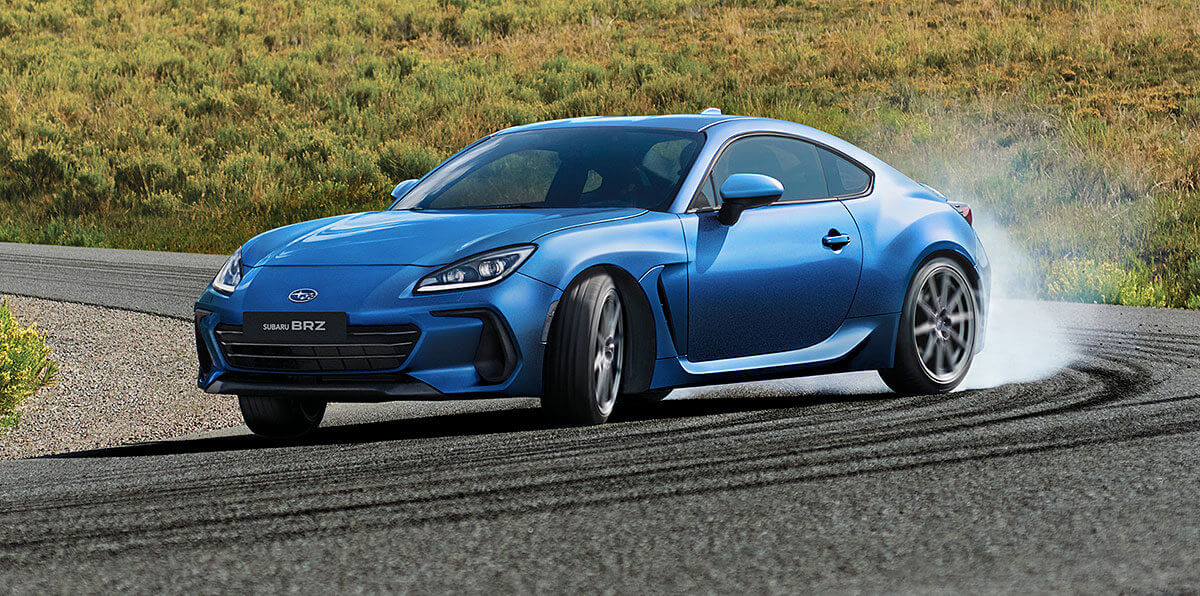
For those seeking more exotic models, the Chevrolet Corvette and Ford Mustang are excellent options. They offer high performance and a character suited to drifting, although their purchase price is higher, and parts may be harder to find in France 😒
How to prepare a drift car?
In drifting, engine power is not the most crucial factor. While it’s challenging to drift with a 90-horsepower diesel sedan, as mentioned earlier, some vehicles are naturally well-suited to this discipline. However, to perform controlled slides, the car's chassis needs specific modifications.
This mainly concerns the rear differential. Amateur drifters often opt for a welded differential as a cost-effective solution. Professional drivers prefer a limited-slip or locking differential, sometimes adjustable to adapt settings to track conditions. Replacing the handbrake with a hydraulic version is also recommended for better responsiveness during maneuvers.
Suspension is another essential element. A sports suspension kit is advised to improve the front-end grip, crucial for maintaining precise drifting trajectories. Adjustable coilovers allow drivers to tune ride height and stiffness based on their needs and the track characteristics.
To compete in official events, it is necessary to comply with FIA regulations. This includes installing a roll cage, bucket seats, harnesses, and personal safety equipment such as a fireproof suit and fire extinguisher. All these elements must be FIA-approved for the race car to be accepted during events.
How much does drifting cost?
For a drifting day, several factors must be considered. First, your car must be in perfect condition to take to the track. This involves a full check-up to ensure the brakes, transmission, and clutch are in good working order. It’s also crucial to regularly check fluid levels, as drifting puts the engine under high stress, and sliding can cause fuel or oil starvation. Prepare one or two sets of tires depending on the track condition, whether wet or dry 😉
Most organizers offer civil liability insurance (RC), covering damage on the track or to third parties. The cost of this insurance varies depending on the event and may be included in the session fee. Generally, a drifting day costs between €120 and €300 per car, including RC insurance.
If your drift car is not road-legal, you will need to arrange transportation. A van or truck to tow a trailer will be necessary to transport the car, tires, and equipment. Wearing a helmet is mandatory. Also, consider bringing a toolbox and some spare parts to address minor issues that could otherwise ruin your day.
How do drift days work?
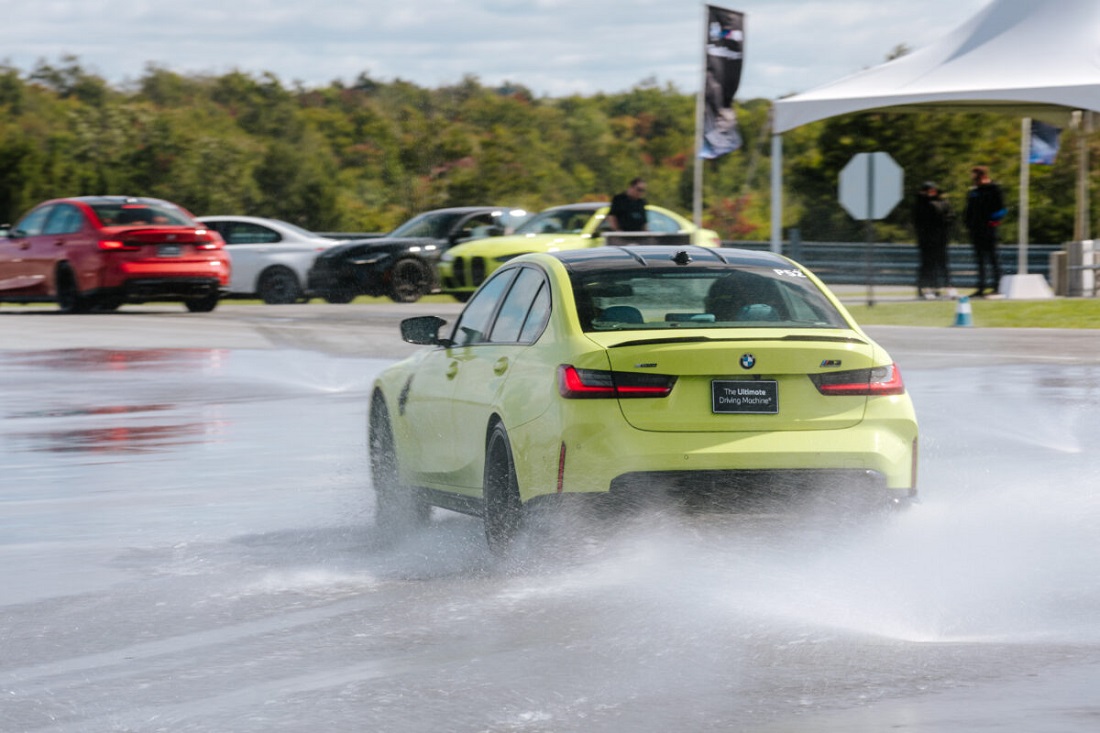
At the heart of drift days lies an interesting feature: track watering. Unlike standard track sessions where grip is essential, drift days intentionally seek low grip levels. But why is this?
Watering the track reduces friction between the tires and the asphalt, allowing cars to slide more easily. It’s like adding ice to a skating rink, creating ideal conditions for drivers to perform controlled slides. Practicing drift on a wet track is perfect for beginners, while dry-track drifting requires precise control of the vehicle and its power, with optimal throttle modulation at all times.
Drifting on a wet track is also much less demanding on cars and tires, reducing wear and mechanical strain.
While drift days focus on the art of sliding, there is an opposite practice: grip days. During these sessions, the goal is maximum speed and grip, providing a playground for enthusiasts of pure speed and precise timing.
Drift driving courses
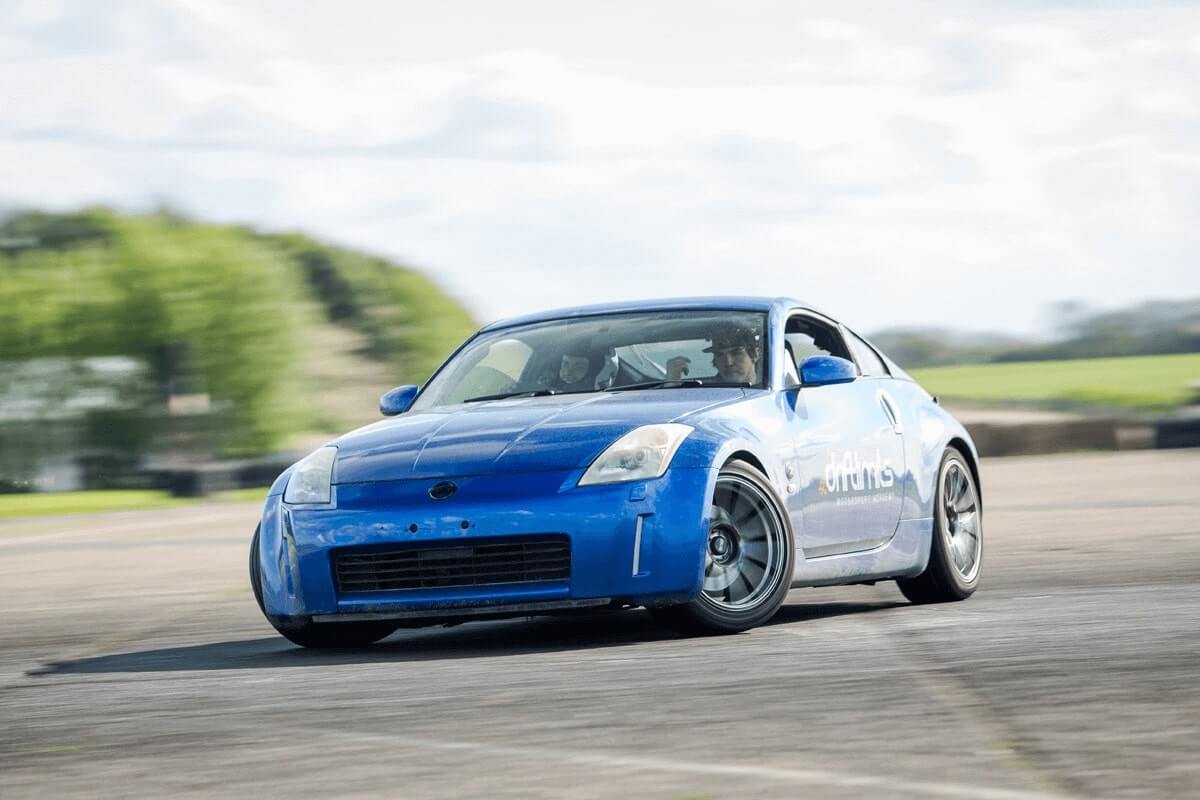
To master the art of drifting, participating in a driving course is undoubtedly the best option. Supervised by professionals, these courses teach the essential techniques for proper drifting. Whether you're a beginner or experienced, the courses are designed to cater to all skill levels, providing personalized and safe progression.
During a course, instructors guide you through various drifting techniques, such as using the handbrake, heel-toe shifting, and weight transfer. You’ll learn to maintain the car in a slide. These courses take place on automotive circuits, mostly on watered tracks, providing a safe and adapted environment for drifting 🙂
Tracks like La Ferté-Gaucher, the Circuit du Bourbonnais, and the Circuit du Castellet are particularly popular for drift courses. They feature modern facilities and varied layouts.
The vehicles used for these courses, such as the Toyota GR86, BMW M3, and Nissan 370Z, are specially prepared for drifting with equipment like hydraulic handbrakes and reinforced suspensions.
Whether you want to refine your technique or learn the basics of drifting, driving courses will provide the skills needed to master this demanding and spectacular discipline.
During the winter season, it might be interesting to attend an ice driving course to improve your control over slides. If this topic interests you, check out our article on ice circuits currently operating in France.
Drift competition: how does it work?
Numerous drift events are held every year in France, Europe, and around the world. In addition to drift days and driving courses, the most skilled drivers can aim for the French Drift Championship (CFD), organized in partnership with the FFSA.
The CFD consists of five rounds held on different circuits. Each round spans three days: Friday is dedicated to practice sessions, Saturday is split between practice and qualifying sessions, and Sunday is reserved for the competition, with two driver categories: Pro and Elite.
The best CFD drivers can then compete in the Drift Masters European Championship, bringing together Europe’s top talents on prestigious circuits such as PGE Narodowy in Poland or Circuit Ricardo Tormo in Spain. Globally, the discipline is showcased in iconic events like Formula Drift in the United States or the FIA Intercontinental Drifting Cup, held annually in Tokyo.
In addition, national and local competitions such as the Drift Cup at the Anneau du Rhin in France or the British Drift Championship in the UK offer opportunities to compete on more accessible tracks. Series like the D1 Grand Prix in Japan or King of Europe also allow drivers from diverse backgrounds to participate in international events.
Drifting stands out from other motorsports by integrating telemetry into the evaluation criteria for drivers, combined with judgments based on style, attack angle, trajectory, and speed.
Whether you want to simply enjoy sliding during drift days, refine your technique through courses, or aim for podium finishes in official competitions, drifting has something to captivate every driving enthusiast.
So, are you ready to dive in and experience the unique thrills of drifting? 🥳


